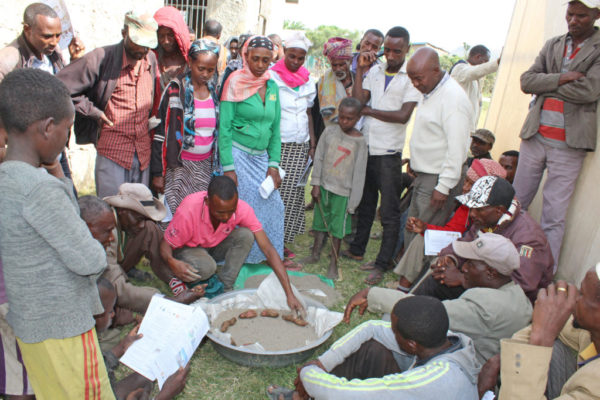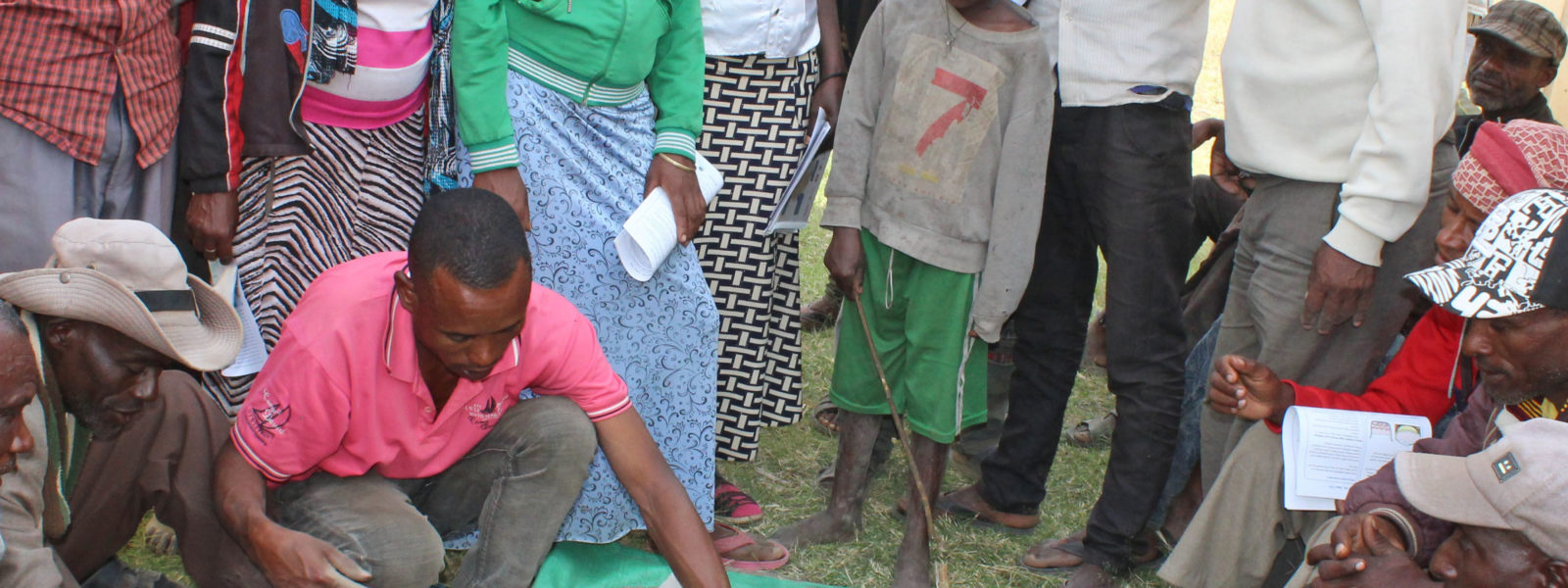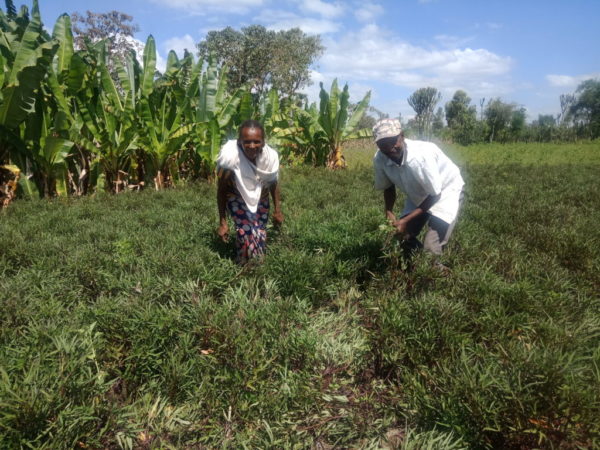“Next season I will fill my farm, and my father’s farm, with sweetpotato,” says Bezabih Hamamo, who is using Triple S technology on his farm in southern Ethiopia to produce his own quality sweetpotato planting material. Triple S, which stands for ‘Storing in Sand and Sprouting’, involves storing sweetpotato roots in sand through the dry season, only allowing them to sprout and produce planting material when the farming season begins again with the rains. This method ensures a consistent supply of seed for farmers while reducing costs and is particularly beneficial in areas with long dry seasons and unpredictable seasons – an increasing challenge under climate change.
Hamamo is from Hawassa Zuria, approximately 40km from Hawassa town, and it is in this area that the Triple S technology is being scaled through the CGIAR Research Program on Roots, Tubers and Bananas (RTB) Scaling Fund portfolio.

Sweetpotato farmers watch a demonstration of how to set up a Triple S container, storing roots in dry sand. Photo: CIP
Hamamo and his wife, Worke Kuchuta, are enthusiastic orange-fleshed sweetpotato (OFSP) farmers and, as part of efforts to scale the technology, have been identified as a Triple S ‘champion household’ tasked with disseminating knowledge on the technology for conservation and multiplication of planting material to farmers in their kebele (village).
Although the next planting season not for another five months, the pair are not worried about where they will find vines to replant their fields. Following the Triple S process, they will store roots in sand in a cool dry place over the dry season. Six weeks before rains are expected, the sprouted roots are taken out of storage and planted in an irrigated seed bed, to produce planting material which will be ready at the beginning of the wet season.
Hamamo was introduced to this technology through the SASHA II project with 20 roots as starter material in 2016 and was trained on how to use the method by Mihiretu Cherinet, a scientist from the International Potato Center (CIP).
Hamamo and Worke produce planting material both for their farm and for sale to other farmers. They attest to the nutritious benefits and income gained from OFSP cultivation. Recently, Hamamo sold roots from a small section of their farm to traders in Hawassa for ETH Birr 7,000 (USD255) and says there is a high demand for the roots. “My six children enjoy OFSP very much, eating it on its own and mixing it with other staples such as kocho and maize,” says Worke. Kocho is a starch extracted from the enset plant, fermented and then used to prepare different local foods.
It is currently the harvesting season and the couple have already identified the section of the farm that they will select roots to use for their Triple S system. The plants in this section look healthy, vigorous and have the medium sized roots ideal for this technology. As they prepare to harvest, Hamamo and Worke are also taking the time to train other farmers on this technology using their farm as a good demonstration that it works. Hamamo emphasizes that with this technology, farmers will not need to depend on projects to distribute vines or spend money to buy vines, instead they are assured of their own quality planting material.
Hamamo and Worke are not the only ones teaching farmers about this new technology; extension agricultural officers from the Bureau of Agriculture and Natural Resource Development have partnered with CIP to train other champion households in target villages. They identify four champion households who are trained in a classroom setting, as well as participating in a physical demonstration on how to select healthy roots and set up the Triple S container. In turn, the champion households train other farmers in their respective communities increasing the opportunities of this technology going to scale.
Cherinet highlights the advantages of Triple S, explaining that in the three years that this technology has been in use there has been no observable reduction in yield and no weevils observed, unlike when traditional methods of conserving planting material are used. Traditional conservation methods include preservation under the shade of enset trees during the dry season.
With 48 Triple S champion households in three different districts (Hawassa Zuria, East Badiwacho and Mirab Abaya) cascading knowledge to other households in their communities, the use of Triple S has great potential to positively impact food security, nutrition and income in the region.
With support from RTB, CIP is implementing the Triple S PLUS initiative with different scaling partners and is also testing effective methods for the dissemination of the Triple S technology by using gender-responsive communication materials in the form of step-down trainings, video-based trainings and radio programs. In partnership with People In Need, a nongovernmental organization working on nutrition projects that include sweetpotato, the Triple S PLUS initiative aims to reach 25,000 households in six districts of Ethiopia.
This research was supported by CGIAR Trust Fund contributors.

